 W
WThe 2010 Nigerien floods were floods across Niger which left over 111,000 people homeless. Niger was already suffering acute food shortages following prolonged drought in the Sahel region. As of 24 August 2010, at least 6 to 8 people had died. The Niger river was pushed to its highest levels in 80 years. The floods subsequently spread along the River Niger into Nigeria, Ghana, Burkina Faso, Togo and Benin over the next few months. Later storms also brewed up in the CAR, Morocco and northern Algeria.
 W
WThe Sultanate or Kingdom of Bagirmi or Baghermi was a kingdom and Islamic sultanate southeast of Lake Chad in central Africa. It was founded in either 1480 or 1522 and lasted until 1897, when it became a French protectorate. Its capital was Massenya, north of the Chari River and close to the border to modern Cameroon. The kings wore the title Mbang.
 W
WThe Bilala are a Muslim people that live around Lake Fitri, in the Batha Prefecture, in central Chad. The last Chadian census in 1993 stated that they numbered 136,629 persons. Their language, Naba, is divided in four dialects and is a part of the Central Sudanic language family; it is shared by two of their neighbours, the Kuka and the Medogo. These three peoples are collectively known as Lisi and are believed to be descendants of main ethnic groups of the Sultanate of Yao.
 W
WThe Kanem–Bornu Empire existed in areas which are now part of Chad and Nigeria. It was known to the Arabian geographers as the Kanem Empire from the 8th century AD onward and lasted as the independent kingdom of Bornu until 1900. The Kanem Empire was located in the present countries of Chad, Nigeria and Libya. At its height it encompassed an area covering not only most of Chad, but also parts of southern Libya (Fezzan) and eastern Niger, northeastern Nigeria and northern Cameroon. The Bornu Empire (1380s–1893) was a state in what is now northeastern Nigeria, in time becoming even larger than Kanem, incorporating areas that are today parts of Chad, Niger, Sudan, and Cameroon. The early history of the Empire is mainly known from the Royal Chronicle or Girgam discovered in 1851 by the German traveller Heinrich Barth.
 W
WMuhammad Salih bin Yusuf, known as Dud Murra or Dudmurrah, was the last independent ruler, or kolak, of the Wadai Empire. He allied with the Sanusi, powerful traders of the eastern Sahara, and with the Sultan of Darfur to resist French aggression in the eastern Sahel, but was defeated. His sultanate was incorporated in the French military territory of Chad.
 W
WAdolphe Sylvestre Félix Éboué was a French colonial administrator and Free French leader. He was the first black French man appointed to a high post in the French colonies, when appointed as Governor of Guadeloupe in 1936.
 W
WEuropean Union Force Chad/CAR, also EUFOR Tchad/RCA after the French, was the European Union mission in Chad and the Central African Republic (CAR), authorised in late 2007. EUFOR Chad/CAR was authorised under the same United Nations Security Council resolution that mandated MINURCAT, a UN force tasked with training police and improving judicial infrastructure.
 W
WChad was a part of the French colonial empire from 1900 to 1960. Colonial rule under the French began in 1900 when the Military Territory of Chad was established. From 1905, Chad was linked to the federation of French colonial possessions in Middle Africa, known from 1910 under the name of French Equatorial Africa. Chad passed in 1920 to French civilian administration, but suffered from chronic neglect.
 W
WFrench Equatorial Africa, or the AEF, was the federation of French colonial possessions in Equatorial Africa, extending northwards from the Congo River into the Sahel, and comprising what are today the countries of Chad, the Central African Republic, the Republic of the Congo, and Gabon.
 W
WFROLINAT was an insurgent rebel group active in Chad between 1966 and 1993.
 W
WAbd ar-Rahman Gaourang II was Mbang of Bagirmi from 1885 to 1918. He came to power at a time when the sultanate was in terminal decline, subject to both Wadai and Bornu. The Sudanese warlord Rabih az-Zubayr made him his vassal in 1893. Gaourang signed a treaty that made his sultanate a French protectorate in 1897. After the final defeat of Rabih in 1900 he ruled as a subordinate of the French in Chad until his death in 1918.
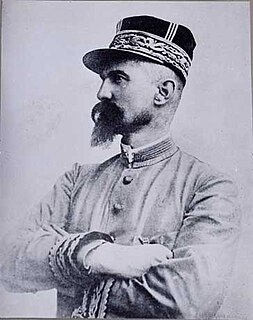 W
WÉmile Gentil was a French colonial administrator, naval officer, and military leader.
 W
WThe Kanem–Bornu Empire existed in areas which are now part of Chad and Nigeria. It was known to the Arabian geographers as the Kanem Empire from the 8th century AD onward and lasted as the independent kingdom of Bornu until 1900. The Kanem Empire was located in the present countries of Chad, Nigeria and Libya. At its height it encompassed an area covering not only most of Chad, but also parts of southern Libya (Fezzan) and eastern Niger, northeastern Nigeria and northern Cameroon. The Bornu Empire (1380s–1893) was a state in what is now northeastern Nigeria, in time becoming even larger than Kanem, incorporating areas that are today parts of Chad, Niger, Sudan, and Cameroon. The early history of the Empire is mainly known from the Royal Chronicle or Girgam discovered in 1851 by the German traveller Heinrich Barth.
 W
WPhilippe François Marie Leclerc de Hauteclocque was a Free-French general during the Second World War. He became Marshal of France posthumously in 1952, and is known in France simply as le maréchal Leclerc or just Leclerc.
 W
WOperation Mount Hope III was a top secret clandestine American military operation to capture a crashed Soviet-made Mil Mi-25 "Hind-D" attack helicopter, an export model of the Soviet Mi-24. The aircraft had crashed and been abandoned in the conflict between Libya and Chad. In 1988 two U.S. MH-47 Chinooks of the 160th Special Operations Aviation Regiment flew almost 500 miles (800 km) at night to the site and retrieved the helicopter without being detected. The mission was conducted entirely within Chad, with the approval of the government of Chad.
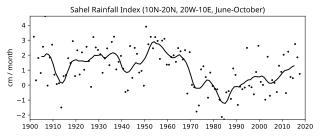 W
WThe Sahel has long experienced a series of historic droughts, dating back to at least the 17th century. The Sahel region is a climate zone sandwiched between the Sudanian Savanna to the south and the Sahara desert to the north, across West and Central Africa. While the frequency of drought in the region is thought to have increased from the end of the 19th century, three long droughts have had dramatic environmental and societal effects upon the Sahel nations. Famine followed severe droughts in the 1910s, the 1940s, and the 1960s, 1970s and 1980s, although a partial recovery occurred from 1975-80. The most recent drought occurred in 2012.
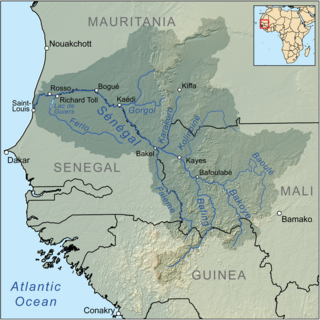 W
WA large-scale, drought-induced famine occurred in Africa's Sahel region and many parts of the neighboring Sénégal River Area from February to August 2010. It is one of many famines to have hit the region in recent times.
 W
WThe Sao civilisation flourished in Central Africa from ca. the fourth or sixth century BC to as late as the sixteenth century AD. The Sao lived by the Chari River basin in territory that later became part of Cameroon and Chad. They are the earliest people to have left clear traces of their presence in the territory of modern Cameroon. Sometime around the 16th century, conversion to Islam changed the cultural identity of the former Sao. Today, several ethnic groups of northern Cameroon and southern Chad, but particularly the Sara, Kotoko, claim descent from the civilization of the Sao.
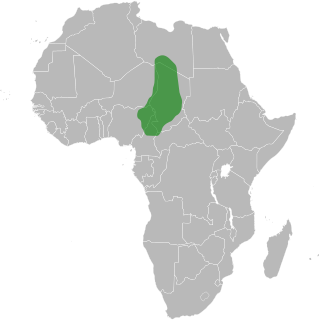 W
WSayfawa dynasty, Sefouwa, Sefawa, or Sefuwa dynasty is the name of the Muslim kings of the Kanem–Bornu Empire, centered first in Kanem in western Chad, and then, after 1380, in Borno.
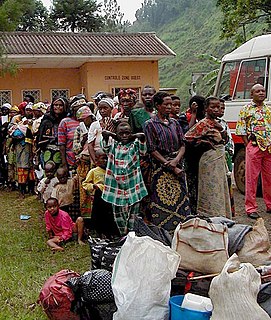 W
WThe Second Congo War began in the Democratic Republic of the Congo in August 1998, little more than a year after the First Congo War, and involved some of the same issues. The war officially ended in July 2003, when the Transitional Government of the Democratic Republic of the Congo took power. Although a peace agreement was signed in 2002, violence has continued in many regions of the country, especially in the east. Hostilities have continued since the ongoing Lord's Resistance Army insurgency, and the Kivu and Ituri conflicts.
 W
WThe United Nations Mission in the Central African Republic and Chad (MINURCAT) was a United Nations peacekeeping mission established by the United Nations Security Council on September 25, 2007 to provide a multidimensional presence of up to 350 police and military personnel to eastern Chad and north-eastern Central African Republic
 W
WThe Voulet–Chanoine Mission or Central African-Chad Mission was a French military expedition sent out from Senegal in 1898 to conquer the Chad Basin and unify all French territories in West Africa. This expedition operated jointly with two other expeditions, the Foureau-Lamy and Gentil missions, which advanced from Algeria and Middle Congo respectively. The refusal of the expedition commander and his second-in-command to follow orders from France, their murder of a commanding officer and their subsequent deaths at the hands of their own soldiers cast a dark shadow over France's emerging colonial empire in Africa at the end of the 19th century. The expedition is remembered for its descent into depravity and extreme violence, actions which today would legally be considered war crimes.
 W
WThe Wadai Sultanate was an African sultanate located to the east of Lake Chad in present-day Chad and the Central African Republic. It emerged in the seventeenth century under the leadership of the first sultan, Abd al-Karim, who overthrew the ruling Tunjur people of the area. It occupied land previously held by the Sultanate of Darfur to the northeast of the Sultanate of Baguirmi.
 W
WDonald Yukio Yamamoto is an American diplomat and the current United States Ambassador to Somalia. Before that he was the Acting Assistant Secretary of State for African Affairs with a term of appointment starting September 3, 2017 until July 23, 2018. Yamamoto previously served as the Senior Vice President, International Programs and Outreach at the National Defense University from 2016–2017. Prior to that, he was Senior Advisor to the Director General of the Foreign Service on personnel reform from 2015–2016; Chargé d'Affaires at the U.S. Mission Somalia office in Mogadishu in 2016; and in senior positions in Kabul, Mazar e-Sharif, and Bagram, Afghanistan from 2014–2015.